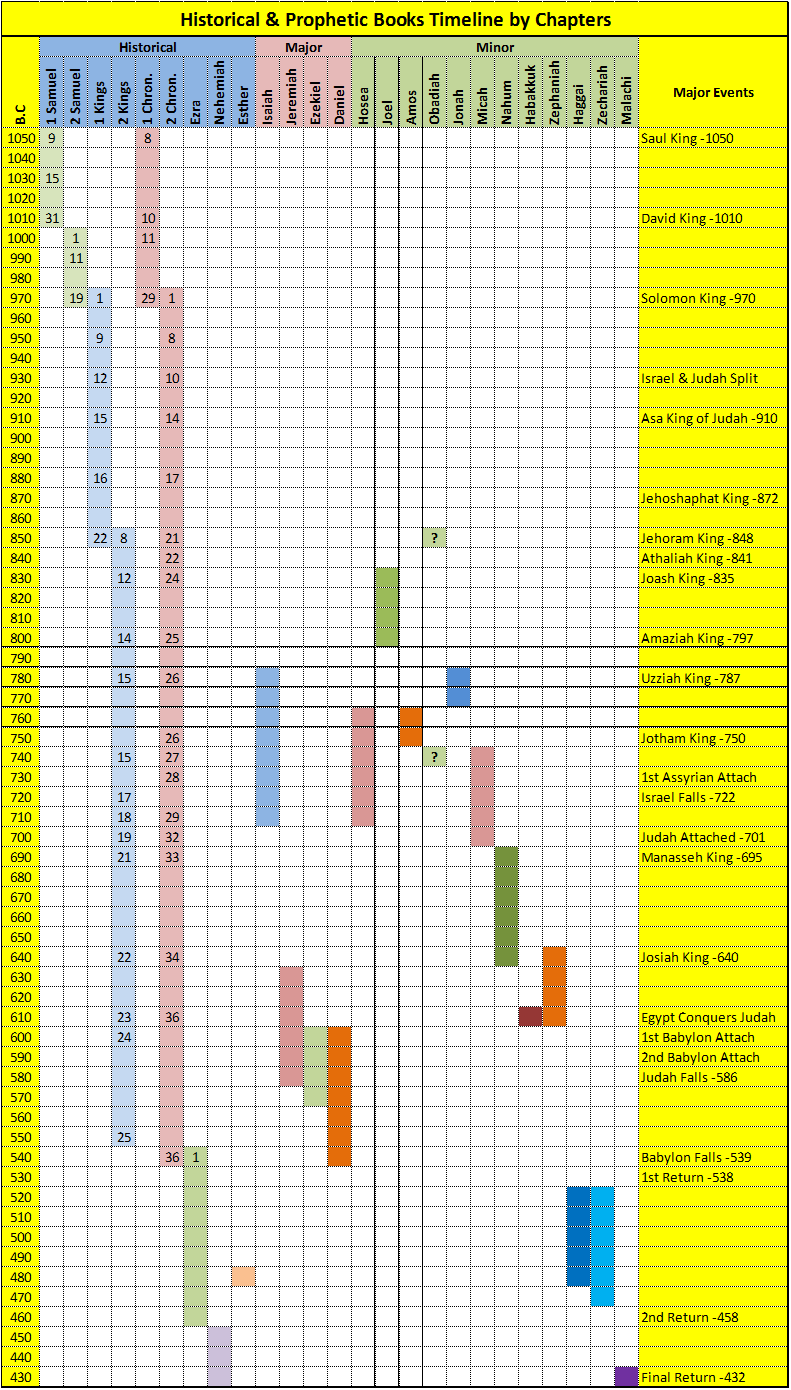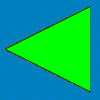INTRODUCTION TO Nahum
QUESTIONS FOR STUDY ONE
OUTLINE
MAP OF THE KINGDOMS OF ISRAEL AND JUDAH
MAPS OF THE ASSYRIAN EMPIRE
OLD TESTAMENT BOOKS TIMELINE
ISRAEL'S HISTORY
MAJOR EVENTS FROM BABYLON TIMES TO ROMAN OCCUPATION OF JUDAH
ISRAEL'S KINGS AND PROPHETS
Before analyzing the test of any book of the Bible, it is well to learn the historical background.
Also, it is best to make a "skyscraper" view of its general contents. Accordingly, this introduction is divided into two parts: background and survey.

- BACKGROUND
- Author.
- Nahum, meaning comfort is undoubtedly the author though nothing is known about him, including his small hometown which is believe to have been in Judah.
- Habakkuk and Zephaniah were contemporary prophets to Nahum though they were younger than he.
- Date and Place of Writing
- Events recorded in Nahum make dating possible. 3:8-10 states Thebes had been destroyed at the hands of Ashurbanipal's Assyrian army which happened in 663 B.C. He also predicts Nineveh fall which would occur in 612 B.C. Thus his prophecies were after 663 B.C. and before 612 B.C.
- Nahum prophecies started during Manasseh's reign and went into Josiah's reign.
- Samaria had already fallen and was deported to Nineveh first in 734 B.C. and then finally in 722 B.C. Judah would fall to Egypt and then Babylon.
- Addressee
- Nahum is addressed to Nineveh and/or Judah. If Nineveh it was a warning like Jonah's message was. If Judah it was a comfort. The former is more likely for reasons stated below.
- Though Nahum's prophecy concern the fall of Nineveh some scholars say they are not directed toward Nineveh.
- Some scholars see Nahum's prophecy as a comfort to Judah who was continually harassed by Nineveh. However, it would be little comfort since other prophets were saying sinful Judah would fall to Babylon.
- Occasion and Purpose
- Nahum's main theme is judgement against cruel Nineveh.
- Assyria was the world power during Nahum's time. Ashurnasirpal II (883-859 B.C.) conquered the peoples to the north in Asia Minor as far as Nairi (modern Turkey/Iran) and exacting tribute from Phrygia (modern Turkey), then invading Aram (modern Syria) conquering the Aramaeans and neo Hittites between the Khabur and the Euphrates Rivers. His harshness prompted a revolt that he crushed decisively in a pitched, two-day battle. According to his monument inscription while recalling this massacre he says, "their men young and old I took prisoners. Of some I cut off their feet and hands; of others I cut off the ears noses and lips; of the young men's ears I made a heap; of the old men's heads I made a marinet. I exposed their heads as a trophy in front of their city. The male children and the female children I burned in flames; the city I destroyed, and consumed with fire." Following this victory, he advanced without opposition as far as the Mediterranean and exacted tribute from Phoenicia.
- Jonah, the prophet proceeding Nahum by around one hundred years also prophecies about Nineveh's judgment. However, unlike Nahum's ministry Nineveh accepted Jonah's warning and repented.
- A generation after Nineveh's repentance they returned to their oppression, cruelty, idolatry, and wickedness.
- Samaria was conquered, destroyed and deported to Assyria by Assyria in 701 B.C. Assyria was very cruel to the northern tribes as they had been to all those they defeated.
- Thebes was destroyed at the hands of Ashurbanipal's Assyrian army in 663 B.C., a feat no one in he world thought was possible. Judah had lost much of its cities and fortresses at the hands of the Assyrians.
- In the 620s B.C. the Scythians (outlandish barbarians) invaded Canaan. They came quickly on horses from southern Russia (just north of Assyria). They destroyed the Philistine cities of Ashkelon and Ashdod, going along the Mediterranean Sea and right past Judah. They went as far as the Egyptian boarder who paid them off to stop them from destroying them.
- Nineveh fell in 612 B.C. at the hands of the Babylonians. Prophets like Micah generations earlier had predicted that Babylon would be God's hand of judgment against Judah.
- In 609 B.C., three years after Nineveh fell Judah's king was so confident that he attacked Egypt whose army was being sent to assist Assyria in their wars. Judah lost and became subject to Egypt. In 605 B.C. Babylon attacked and defeated Egypt at the battle of Carchemish (2 Ki. 24:1-7) making Judah subject to Babylon. After the battle of Carchemish, Nebuchadnezzar, as crown prince of Babylon, advanced to Jerusalem and then quickly left for Babylon to be crowned king when his father died. Then he returned to Jerusalem. Nebuchadnezzar spared King Jehoiakim, who had rebelled against him when he left to be made king. However, Nebuchadnezzar carried off several of the princes of Judah, among them was Daniel, Shadrach, Meshach, and Abednego.
- Form and Style
- The entire book is prophecy in the form of a judgement oracle, a vision of Nahum.
- The entire book is in poetic form similar to that of Isaiah using intense moods, sights, and sounds. Nahum uses metaphors, similes, and vivid word pictures.
- Place Among the Old Testament Books
- Nahum is one of the smaller books of the Old Testament with only three chapters. Scholars have placed it with the other eleven minor prophets.
- Just because scholars have classified twelve of the prophetic books as minor does not mean that their message is any less important than the four major prophets. In fact the New Testiment quotes the minor prophets more than the major prophets.
- SURVEY
The entire book concerns the judgment to come to Nineveh. Jonah, the prophet proceeding Nahum by around one hundred years also prophesied about Nineveh's judgment. However, unlike Nahum's ministry Nineveh accepted Jonah's warning and repented.
A generation after Nineveh's repentance they returned to their oppression, cruelty, idolatry, and wickedness. The book ends with the destruction of the city.
The first eight verses concerns God's character. What follows is the outcome for Nineveh which flows from God's character; his kindness and sternness, his love and his justice, his forgiveness to the repentant and his punishment to the unrepentant.Nahum is a stern warning to all generations, especially now. What God desires is not a position of relationship which is assumed by some past action on the part of God, whether Sinai or Calvary, but a continued response of trust and reliance on God. (1:7)
Even though God has chosen Assyria to act as his instrument of punishment against the rebellious and recalcitrant Israel, he holds that nation corporately responsible for the excesses and atrocities committed in fulfilling this role. (Isaiah 7:17; 10:5-19, Zeph. 2:14-15) This is similar to Jesus' parable of the people called to work in his vineyard. The called servant who beat his fellow servants and eat and drank with drunkards was "cut to pieces and assigned a place with the hypocrites, where there will be weeping and gnashing of teeth." (Matthew 24:36-51)
STUDY 1 QUESTIONS
STUDY 1 COMMENTS
|
























